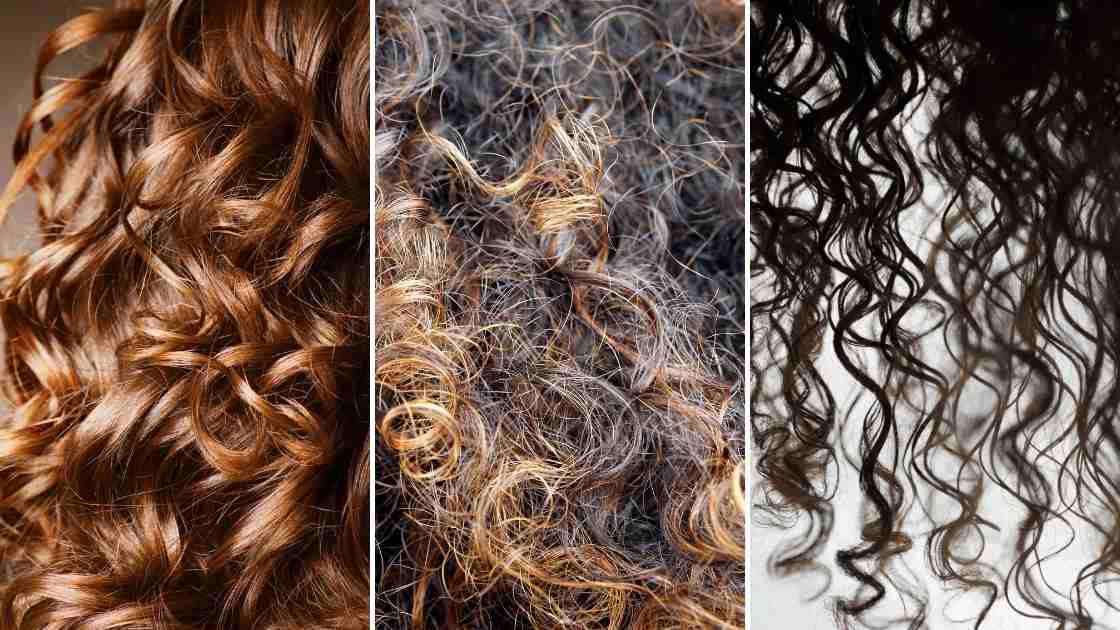Healthy Curls Vs Unhealthy Curls
In the realm of beauty and self-expression, curls are a unique and beautiful canvas, reflecting personal style and individuality. The fact about healthy curls vs unhealthy curls not only enhances one’s appearance but also serves as a testament to overall well-being. The vibrancy, bounce, and shine of curls are indicators of hair health, which is deeply intertwined with lifestyle choices, environmental factors, and proper maintenance.
Before we delve into the secrets of cultivating vibrant curls, it’s crucial to understand the factors influencing their health. From lifestyle and diet to environmental elements like pollution and weather, the journey to healthy curls involves a holistic approach. As we explore the signs of unhealthy hair curls and ways to remedy them, remember that achieving and maintaining healthy curls is not just a beauty goal but a commitment to overall well-being.
Signs of Unhealthy Hair Curls
Identifying signs of damage is the first step toward reclaiming the vitality of your curls. Understanding these signs can guide you in adopting a proactive approach to curl care.
Texture changes
Healthy curls boast a defined texture, while damaged curls may lose their natural pattern. If you notice a shift in your curl pattern or uneven texture, it could be a sign of damage that needs attention.
Split ends
Split ends are the nemesis of healthy curls. Regular trims and proper care can prevent split ends from traveling up the hair shaft, preserving the integrity of your curls.
Excessive shedding
While shedding is a natural part of the hair growth cycle, excessive hair loss can be a red flag. Addressing the root cause, be it dietary deficiencies or environmental stressors, is key to restoring curl health.
Dullness and lack of vibrancy
Healthy curls exude radiance and vibrancy. Dull, lifeless curls may indicate a lack of moisture, nutrient deficiency, or exposure to damaging elements.
Difference Between Healthy and Damaged Curls: Healthy Curls vs Unhealthy Curls
Your daily choices play a significant role in the well-being of your curls. A nutritious diet, proper hydration, and a mindful lifestyle contribute to the overall health of your hair.
The Impact of Lifestyle on Curl Health: Diet and Hydration
Your curls, like the rest of your body, thrive on a balanced diet and hydration. Essential nutrients like vitamins A, C, E, and biotin promote hair health. Hydration ensures that your curls receive the moisture they need to maintain their elasticity and shine.
Environmental Factors (Pollution, Weather)
Tips for Healthy Curls
The external environment can be harsh on your curls. Pollution and weather extremes can strip your hair of moisture and nutrients. Shield your curls by investing in protective styles and using products designed to combat environmental stressors.
The role of proper maintenance in achieving and maintaining healthy curls
Conditioning techniques: Maintain Bouncy Curls
Regular conditioning is the cornerstone of healthy curls. Use a nourishing conditioner that suits your curl type to maintain elasticity, reduce frizz, and promote shine. Deep conditioning treatments provide an extra boost of hydration and repair for damaged curls.
Best Products for Curly Hair Health
Choosing the right products is essential for curl health. Look for sulfate-free shampoos, hydrating conditioners, and styling products tailored to your curl type. Experiment with different products to find what works best for your unique curls.
Curly Hair Porosity and Health
Understanding your curl’s porosity is a game-changer in the quest for healthy hair. Porosity refers to your hair’s ability to absorb and retain moisture, and it significantly impacts overall curl health.
Factors Affecting Curl Health
Curls, with their unique texture and bounce, require special attention to maintain optimal health. Understanding the various factors that influence curl health is essential for crafting a tailored care routine. Let’s explore the key elements that can either elevate or challenge the well-being of your curls.
Environmental Influences
The environment plays a crucial role in the health of your curls. External factors such as pollution, weather conditions, and even the quality of the air can impact the vibrancy and resilience of your curls.
Impact of Pollution on Healthy Curls vs Unhealthy Curls
Pollution isn’t just a concern for your skin; it can also affect your curls. Airborne particles and pollutants can lead to product buildup, leaving your curls lackluster and prone to damage. Clarifying shampoos and protective styles are effective weapons against the adverse effects of pollution.
Weather-Related Challenges and Solutions
Weather extremes, from scorching heat to bone-chilling cold, pose challenges to your curls. Excessive humidity can lead to frizz, while dry conditions may result in brittle curls. Adapting your hair care routine to weather changes and using products that offer protection and hydration are key to weathering these challenges.
Lifestyle Factors Contributing to Curl Health
Your lifestyle choices have a direct impact on the health of your curls. Stress, inadequate sleep, and poor dietary habits can manifest in the form of dull, lackluster curls. Embracing a holistic approach to curl care involves addressing these lifestyle factors to ensure your curls reflect overall well-being.
Understanding the interplay of these environmental and lifestyle factors is crucial for maintaining vibrant, healthy curls. By adopting a proactive approach and incorporating protective measures into your routine, you can navigate these influences and empower your curls to shine with vitality.
What do unhealthy curls look like?
Curly Hair Wellness Tips
Low-porosity curls repel moisture, requiring lightweight products, while high-porosity curls benefit from heavier moisturizers to lock in hydration. Tailoring your routine to your curl’s porosity ensures optimal health and vitality.
Strategies to manage and improve curl porosity: Curls Health Essentials
Balancing the porosity of your curly hair is pivotal to achieving and maintaining healthy curls. The main keyword, “healthy curls,” encompasses the essence of nurturing your hair to thrive at its best. Establishing a steadfast moisture routine plays a crucial role in this endeavor. By incorporating practices such as regular deep conditioning, steering clear of excessive heat, and shielding your curls from environmental stressors, you can witness a remarkable transformation in your curly hair before and after. These measures not only contribute to optimal porosity levels but also exemplify the journey toward healthier, more vibrant curls.
Curly Hair Maintenance Guide: Essential tips for maintaining healthy curls
The Curly Hair Difference
Consistent care is the key to vibrant curls. Establish a routine that includes regular washing, conditioning, and styling. Avoid excessive heat styling, and embrace protective styles to minimize damage.
Nourishing your curls with the right products
Invest in products formulated for your curl type. Consider leave-in conditioners, oils, and masks to provide extra nourishment. Rotate products to prevent buildup and keep your curls refreshed.
Experts recommend detangling your curls with a wide-tooth comb, starting from the ends and working your way up. This minimizes breakage and preserves the integrity of your curls.
Essentials for Healthy Curls Vs Unhealthy Curls
A holistic approach involves addressing internal and external factors. Stay hydrated, eat a nutrient-rich diet, and protect your curls from environmental stressors. Your curls will thank you with vibrancy and vitality.
Lifestyle factors contributing to curl health
Holistic Curl Care Tips
Lifestyle choices, including stress management and sleep patterns, influence the health of your curls. Prioritize self-care to ensure your curls reflect a balanced and healthy lifestyle.
Strategies for revitalizing unhealthy curls
If your curls have lost their luster, fear not. Adopt a revitalizing routine that includes deep conditioning, trims, and a commitment to healthy practices. Prevention is key to maintaining healthy curls. Protective styles, proper hydration, and a consistent maintenance routine are proactive solutions to common curl challenges.
Shine Brighter
The transformation from lackluster to vibrant curls is possible with dedication and the right care. Embrace the journey and witness the resurgence of your curl’s natural brilliance.
Does Healthy Hair Hold Curls Better?
Healthy hair holds curls better due to its natural elasticity and moisture retention. Well-maintained curls create a resilient foundation for long-lasting styles.
How to Get Healthier Curls Back?
Achieving healthier curls involves a combination of proper hair care practices, a healthy lifestyle, and using the right products. Here are some tips to help you get healthier curls:
Moisture is Key:
Curls tend to be naturally drier than straight hair, so keeping them moisturized is crucial. Use a sulfate-free, hydrating shampoo and conditioner.
Deep condition regularly to provide extra moisture. You can use a deep conditioning treatment or natural oils like coconut oil, olive oil, or argan oil.
Avoid Heat Damage:
Limit the use of heat-styling tools like flat irons and curling irons. If you do use them, apply a heat protectant spray first.
Embrace natural drying methods, such as air-drying or using a diffuser on a low heat setting.
Gentle Detangling:
Detangle your hair when it’s wet, using a wide-tooth comb or your fingers. This reduces breakage and minimizes damage.
Trim Regularly:
Regular trims help prevent split ends and keep your hair healthy. Aim for a trim every 6-8 weeks or as needed.
Protective Styling:
Styles like braids, twists, or buns can protect your curls from environmental damage and manipulation. Just be sure not to make them too tight to avoid breakage.
Healthy Diet:
Your hair’s health is closely linked to your overall well-being. Eat a balanced diet rich in vitamins and minerals, especially those like biotin, vitamin E, and omega-3 fatty acids.
Stay Hydrated:
Drink plenty of water to keep your body, including your hair, well-hydrated.
Choose the Right Products:
Use products specifically designed for curly hair. Look for sulfate-free shampoos, moisturizing conditioners, and styling products that cater to your curl type.
Avoid Harsh Chemicals:
Be cautious with chemical treatments like relaxers or excessive use of hair dyes. These can damage your hair and alter its natural texture.
Sleep on Satin or Silk:
Cotton pillowcases can cause friction and result in frizz. Switch to a satin or silk pillowcase to help preserve your curls while you sleep.
Remember, everyone’s hair is unique, so it may take some time to find the routine and products that work best for you. Experiment with different techniques and products until you find what makes your curls happy and healthy.
Conclusion
In the quest for healthy curls vs unhealthy curls understanding the signs of damage, adopting a holistic approach to care, and addressing environmental and lifestyle factors are paramount. Embrace the uniqueness of your curls and commit to practices that enhance their vitality.
Encourage readers to prioritize their curls’ health by incorporating the tips and strategies outlined. Consistent care and attention to their unique needs will redefine the radiance of their curls. Highlight that a holistic approach, encompassing internal and external factors, is the secret to long-lasting curl health. A balanced lifestyle, nourishing products, and protective measures contribute to vibrant, healthy curls.
Frequently Asked Questions and Answers
Q1. How long does it take to see improvements in curl health?
Results vary, but with consistent care, improvements can be noticed in a few weeks to months.
Q2. Can damaged curls be revived?
Yes, damaged curls can be revitalized through regular trims, deep conditioning, and a dedicated care routine.
Q3. What products are best for curly hair health?
Sulfate-free shampoos, hydrating conditioners, and products tailored to your curl type are ideal for maintaining curl health.
Q4. How does the weather affect curly hair?
Weather extremes can lead to dryness or excessive humidity, impacting curl health. Adjust your routine and use protective styles accordingly.
Q5. Is a healthy lifestyle important for curl health?
Absolutely. Lifestyle factors, including diet, hydration, and stress management, significantly contribute to the overall health of your curls
Q6. How long does it take to get healthy curls?
The timeline to achieve healthy curls varies, but noticeable improvements typically occur within a few weeks to a few months with consistent, proper care.











Leave a Reply